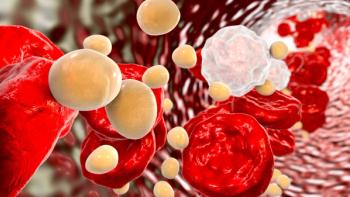
Researchers Find Way to Control Molecular Switches That Regulate Human Cell Growth
Findings could lead to effective new cancer treatments.
Findings could lead to effective new cancer treatments.
Scientists at the University of Texas Health Science Center at Houston recently developed a new electrical mechanism that controls the molecular switches that regulate human cell growth. The information could go a long way in developing new drugs for patients with cancer.
The research focused on a molecular switch called K-Ras. Mutated versions of the molecular switch are found in about 20% of all human cancers in the United States, and these mutations lock the K-Ras switch in the on position.
“When K-Ras is locked in the on position, it drives cell division, which leads to the production of a cancer,” said study senior John Hancock, MB, B.Chir, PhD, ScD. “We have identified a completely new molecular mechanism that further enhances the activity of K-Ras.”
The study focused on the tiny electrical charges that all cells carry across the limiting plasma membrane.
“What we have shown is that the electrical potential (charge) that a cell carries is inversely proportional to the strength of a K-Ras signal,” Dr. Hancock said.
Using a high-powered electron microscope, scientists were able to observe that certain lipid molecules in the plasma membrane respond to an electrical charge. In turn, it amplifies the output of the Ras signaling circuit, just like a transistor does in an electronic circuit board.
“Our results may finally account for a long-standing but unexplained observation that many cancer cells actively try to reduce their electrical charge,” said first author Yong Zhou, PhD, assistant professor of integrative biology and pharmacology at UTHealth Medical School.
The initial work was done with human and animal cells, with the findings later confirmed in fruit fly models on membrane organization.
“This has huge implications for biology,” Hancock said. “Beyond the immediate relevance to K-Ras in cancer, it is a completely new way that cells can use electrical charge to control a multitude of signaling pathways, which may be particularly relevant to the nervous system.”
Newsletter
Stay informed on drug updates, treatment guidelines, and pharmacy practice trends—subscribe to Pharmacy Times for weekly clinical insights.



















































































































































































































